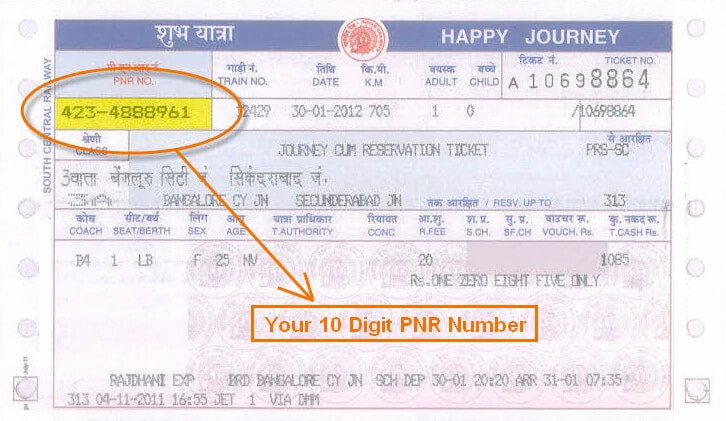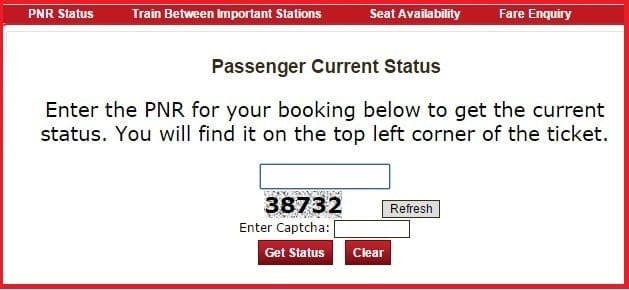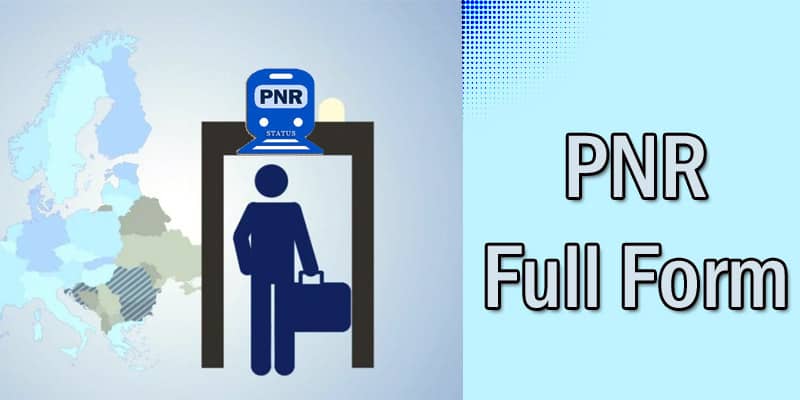PNR is the abbreviated form of Passenger Name Record.
Introduction
When a group of passengers is traveling together in a train or airplane, their personal and travel details are stored in the database of a Computer Reservation System (CRS). The data of an individual traveler is known as Passenger Name Record (PNR Full Form).
Concept behind PNR
The concept of the PNR was first introduced by airlines to exchange information when passengers required more than one flight to reach their destinations. However, PNR can also be used for bookings of hotels, rental cars, and train trips.
A PNR, created by the travel agent or travel website user, is stored in the CRS or Global Distribution Systems (computerized network system) owned by companies such as Sabre, Travelport, Amadeus, Apollo, Galileo, etc.
This article is not just about the full form of PNR; rather, it will also put some light on the rarely known facts about PNR.
Parts of a PNR
Technically there are five parts of a PNR required before booking a journey:
- Name of the Passenger/ Passengers
- Contact details of the travel agent or airline office
- Complete information of at least one passenger
- Details of the tickets, such as Train Number, Date of Journey, Source and Destination stations, Class, Birth, and Quota
- Name of the person providing the information or booking the ticket.
10 Digits PNR
PNR is a 10-digit number, in which the first three digits are said to be the indicator of the PRS (Passenger Reservation System) Centre from which the ticket is booked. PRS is the networking solution to the Indian Railways Passenger Reservation System.
The starting digit depends on the Zone of the Train, w.r.t. starting station of the train.
- Issued from the SCR zone (Secunderabad PRS)
- Issued from NR, NCR, NWR, or NER zone (New Delhi PRS)
- Issued from SR, SCR, or SWR zone (Chennai PRS)
- Issued from NFR, ECR, ER, SER, or SECR zone (Kolkata PRS)
- Issued from CR, WCR, or WR zone (Mumbai PRS)
The last seven digits are randomly generated to make the PNR number unique.
PNR is used as a single point of transactions as and when required.

PNR Status
For checking the PNR status for Indian Railways, enter the PNR number on a travel website.
- PNR status can also be checked online.
- Reservation check is done by sending SMS PNR to 139 or calling 139.
- The PNR number of a ticket is usually printed on the top left corner of the ticket. In an e-ticket, the PNR is printed in a separate cell.
- For checking the PNR status of a flight, passengers have to visit the ‘Flight status’ tab on the official website of the flight booked for the journey. It will display information about the flight arrival and departure time, confirmation status of the flight ticket, and much more.

Importance of PNR Status
The booking status of the ticket is considered under PNR status. In the case of a train ticket, PNR status displays whether the ticket is CNF, WL, RAC, GNWL, PQWL, RLWL, etc.
Each of the above abbreviations stands for:
- CNF – Confirmed
- Confirmed + RAC
- RAC – Reservation Against Cancellation
- RAC + WL
- WL – Waiting List
- GNWL – General Waiting List
- PQWL – Pooled Quota Waiting List
- RLWL – Remote Location Waiting List
- TQWL – Tatkal Waiting List
If waitlisted train ticket has been allotted, the status of the ticket may change based on the cancellations on the confirmed tickets. The ticket may move to a lower waiting list number or can also get confirmed. Since the change in the PNR status is recorded in real-time, it is better to have a check on the status quite often.
Validity of the PNR Number
PNR number is invalid after the completion of the journey.
Conclusion
Hope now you have understood the meaning of PNR, the concept behind PNR in a train or airplane journey, the information that a PNR carries, the number of digits in a PNR, how and why to check PNR status, and for how long the PNR is valid. Still, if you have any doubts or queries related to PNR, do mention it in the comments section below. We would try to answer it at the earliest.

